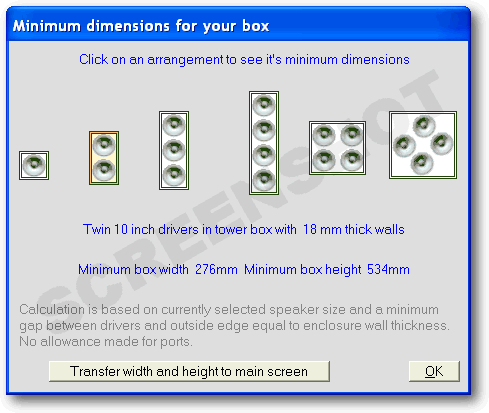

- #SPEAKER ENCLOSURE DESIGN SOFTWARE ONLINE DRIVER#
- #SPEAKER ENCLOSURE DESIGN SOFTWARE ONLINE FULL#
- #SPEAKER ENCLOSURE DESIGN SOFTWARE ONLINE PC#
- #SPEAKER ENCLOSURE DESIGN SOFTWARE ONLINE PLUS#
- #SPEAKER ENCLOSURE DESIGN SOFTWARE ONLINE PROFESSIONAL#
In the 1990s, LEAP and other speaker design software grew in sophistication, enabling users to predict the impact of manipulating speaker driver parameters, band-pass enclosures, passive radiators, and crossover networks.įor the most sophisticated design efforts, there are now magnetic circuit design software and finite element analysis (FEA) cone and thermal prediction simulation software.
#SPEAKER ENCLOSURE DESIGN SOFTWARE ONLINE PC#
"The additional effort of measuring a third impedance curve is well worth it, because you get a lot more information as well as a quality assessment of the measurement data and model fit," they add.With the introduction of the IBM PC and DOS operating system in the early 1980s, Thiele-Small (T-S) simulation software for enclosure design became a must-have for speaker system designers (e.g., autosound installers, pro-sound, commercial speaker, and stereo and home-theater speaker designers). Therefore, we decided to create a web-application, which serves the underlying routines to anyone who can measure impedance - something not so hard to do. Although the quality of the results from the dual-added-mass method is high, we are well aware of the fact that some people might find the mathematics to be difficult to approach.

#SPEAKER ENCLOSURE DESIGN SOFTWARE ONLINE PLUS#
We would say the model is valid within the speaker’s usable range plus one or more octaves beyond.
#SPEAKER ENCLOSURE DESIGN SOFTWARE ONLINE FULL#
This model is versatile it can describe a wide variety of transducer designs accurately over the full audible frequency range. "The electrical model that we prefer is the five-parameter one by Thorborg-Futtrup, which includes motor semi-inductance. It’s a model-free extraction entirely based on the measurement data," the authors describe. In a relatively simple yet powerful computation, the mechanical and electrical contributions are separated, without any assumption of the underlying models. "The dual-added-mass method completely separates the electrical part and the mechanical part of the impedance, facilitating determination of a high-quality electrical model (resistance, inductance, etc.).

Three impedance measurements are performed in free air, with the driver secured tightly in a suitable jig. The tool allows performing three impedance measurements instead of two, adding much higher precision and improving over the old-fashioned way of manually dialing in fL, fS and fH, and allowing to accurately compute a new model parameter that measures the level of driver viscoelasticity. And that is where the idea for the Speakerbench website was born, offering an approach that is perfectly valid for small-signal analysis.
#SPEAKER ENCLOSURE DESIGN SOFTWARE ONLINE PROFESSIONAL#
These are based on the standard measurements for determining loudspeaker Thiele-Small (T-S) parameters and subsequently largely replaced by Klippel measurements, using the hardware and software solutions from Klippel GmbH, at least for industry and professional applications.Īs Claus Futtrup noted, the vast majority of DIY and independent professionals could not afford that equipment and continued to rely on added-mass measurements until today. That research was first presented at the ALMA AISE event (now ALTI Expo) and published in the 2017 edition of the Loudspeaker Industry Sourcebook ( That work led to the publication of an Audio Engineering Society (AES) paper, in December 2017, which explained a novel dual-added-mass method to determine small-signal parameters from three impedance measurements and adding different masses to the cone. Since 2017, the two authors have been researching and publishing work on viscoelastic lumped parameter models for speaker characterization, and more recently exploring the dual-added-mass technique for determining small-signal parameters. Speakerbench doesn't do the actual measurements, only offers calculations based on the actual data input from users. A fourth item in the menu is the Manual, providing the information needed to understand and explore the tools.Ī key feature of this set of tools is the ability to create and use an advanced transducer model that is more accurate than the traditional Thiele-Small model. The available Speakerbench modules in the current website include 'Collect Data from Measurements,' allowing users to merge three impedance measurements into a data container 'Calculate (Fit) Data,' a data container to compute advanced model parameters and 'Datasheet Creator,' allowing users to create a standard datasheet with advanced parameters.


 0 kommentar(er)
0 kommentar(er)
